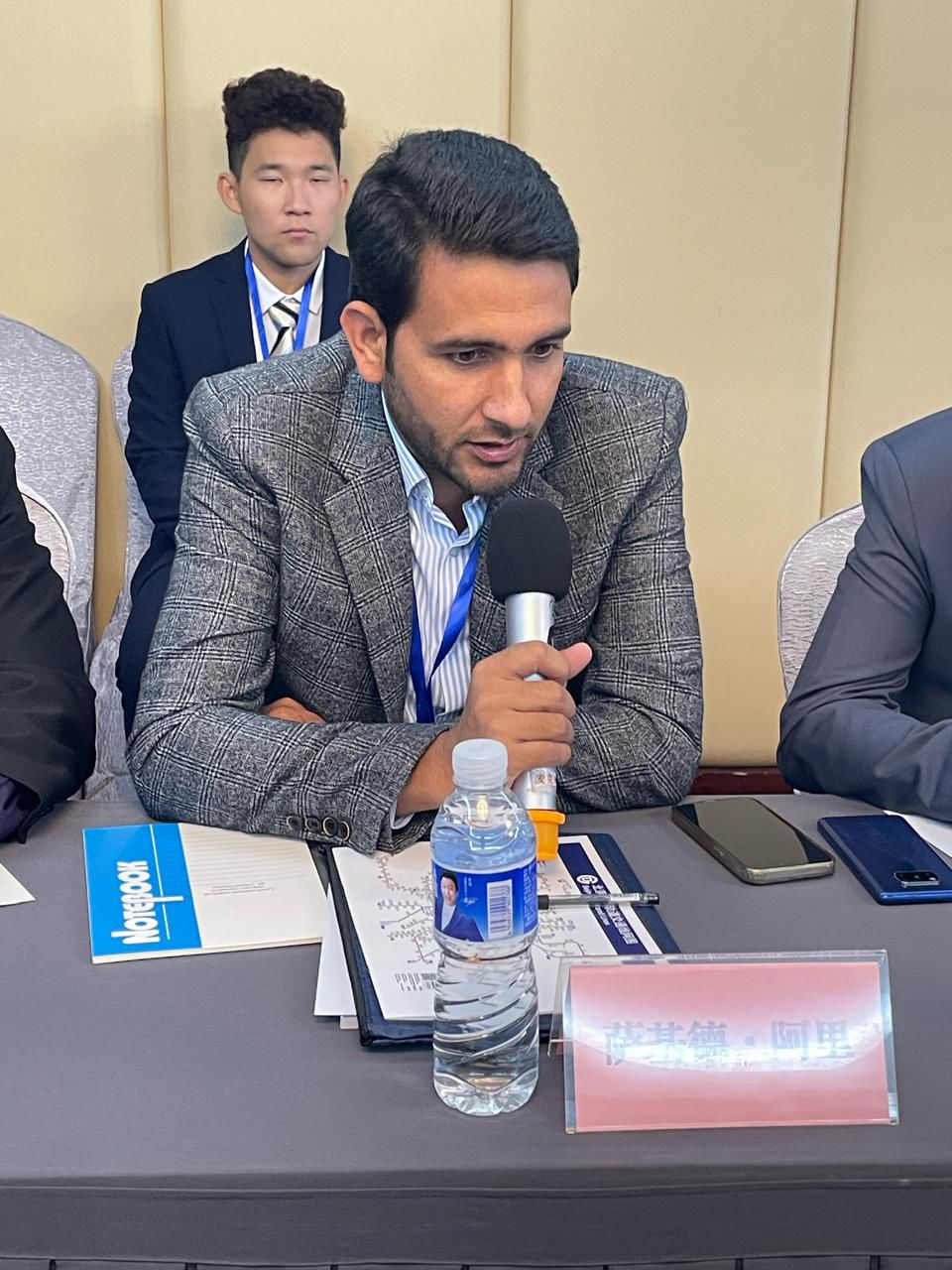
Fortunately, I had the opportunity to represent Pakistan as the youngest participant among sixteen attendees from various departments at a seminar hosted by China’s National Development and Reform Commission (NDRC) and China International Affairs from 10th to 24th October 2024. This event provided unique insights into China’s development and policies, and it was a privilege to engage with such diverse and knowledgeable participants.
My journey began from Islamabad, followed by a flight to Urumqi, where I had a four-hour transit, and then continued to Beijing. I spent five insightful days in Beijing, attending lectures on significant topics such as China’s opening-up policy, President Xi Jinping’s thoughts & reforms, and the country’s remarkable poverty alleviation efforts. Additionally, I was also lucky enough to learn about China’s 14th Five-Year Plan, designed to drive sustainable growth and improve the quality of life for its citizens.
One of the seminar’s most impactful discussions revolved around China’s land specification policy, which many scholars think is a key factor behind its rapid development. This policy restructured land ownership by transitioning land into state hands and leasing it for specific purposes like large-scale agriculture and industrial expansion. This targeted land use allowed resources to be consolidated and strategically deployed, fostering urban development and modernizing agricultural practices. I found this policy particularly impressive, as it maximizes productivity and enhances urban planning, helping build cohesive, well-resourced cities.
Starting from Beijing, I was captivated by the seamless blend of historical and modern architecture. This experience highlighted the contrast between China’s urban planning approach and what I’d seen during my travels across other developed & developing countries of the world. Development in those countries are often centred around key downtown areas, but each Chinese city, I visited appeared equally vibrant and developed, underscoring the effectiveness of its land policy.
Equally remarkable was China’s advanced digital ecosystem, present in everyday life. From cashless transactions with mobile payment apps to widespread digital integration, navigating these cities felt effortless, highlighting the role of technology in enhancing urban life. This tech-enabled infrastructure made navigating Beijing and other cities, as both a resident and visitor, incredibly convenient.
Another standout feature of my travels was the profound sense of security in China’s cities. I felt at ease exploring bustling streets at any hour, a sentiment that contributed greatly to my overall experience and appreciation for the nation’s urban safety standards.
Following my time in Beijing, I travelled to Chengdu, renowned for its dynamic energy and flavorful Sichuan cuisine. Navigating Chengdu was convenient because of its extensive, well-maintained subway network, which alleviates congestion while connecting visitors and residents to districts, cultural landmarks, and local attractions. This type of high-standard public transportation carried through in every city I visited, highlighting the attention China places on urban accessibility.
Beyond public transport, China’s infrastructure is impressive, from high-speed railways and well-maintained highways to pedestrian-friendly walkways. These advancements are essential for domestic travel, tourism, and international trade, contributing significantly to the country’s economic growth.
After Chengdu, I visited Chongqing, a city known for its unique topography and lively cultural scene. Chongqing’s distinctive architecture, perched on mountainous terrain with sweeping riverside views, provided a fascinating contrast to Beijing and Chengdu. The city’s vibrant energy and striking natural beauty made it a memorable experience. From Chongqing, I returned to Beijing for three additional days, allowing me to further immerse myself in the rich history and urban marvels of China’s capital.
Throughout my journey, I was particularly moved by the hospitality and warmth extended by the Chinese people, especially towards Pakistanis. Wherever I went, I was greeted with friendliness and genuine interest in Pakistan, which created a sense of kinship and respect. Unlike some other parts of the world where differences may be met with reserve, the Chinese people’s kindness and hospitality toward Pakistanis stand out. Whether I was sharing a meal, attending a lecture, or exploring the cities, their hospitality and openness made me feel genuinely welcomed and valued as a guest.
Additionally, I gained insight into China’s Belt and Road Initiative (BRI), a comprehensive development strategy that enhances trade and economic partnerships across participating nations. The China-Pakistan Economic Corridor (CPEC), a flagship project of the BRI, has already fueled significant growth within Pakistan by creating jobs, modernizing infrastructure, and expanding trade. Witnessing the reach and impact of the BRI abroad provided a deeper understanding of how China’s strategies are shaping regions like my own.
As the seminar concluded, a memorable closing ceremony chaired by Mr. Chen Shuai, deputy director-general of China International Affairs, capped our experience. I had the honour of presenting him with the cultural cap of Gilgit Baltistan, symbolizing the deep-rooted ties and mutual respect between Pakistan and China. This gesture underscored the importance of cultural exchange and mutual understanding as essential foundations for a collaborative future.
Reflecting on my travels, I am grateful for the insights and friendships I gained. China’s rich culture, advanced infrastructure, and sincere hospitality left a profound impression on me. For Pakistani investors, China offers exciting opportunities, particularly in sectors like technology, renewable energy, and agriculture. With strong bilateral ties and China’s openness to collaboration, these opportunities could be mutually beneficial. Returning to Pakistan, I carry both cherished memories and a renewed desire to foster connections between our peoples, convinced that by building bridges of understanding and cooperation, we can work together toward a brighter, shared future.


Leave a Reply